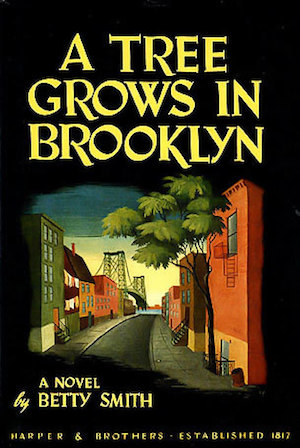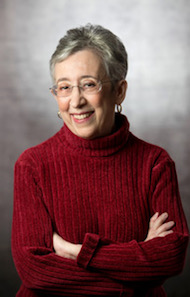 True confession time: I recently read A Tree Grows in Brooklyn, by Betty Smith, for the first time. That’s kind of embarrassing for a writer whose whole series takes place in Brooklyn neighborhoods and has an underlying theme of “What changes in Brooklyn and what doesn’t.”
True confession time: I recently read A Tree Grows in Brooklyn, by Betty Smith, for the first time. That’s kind of embarrassing for a writer whose whole series takes place in Brooklyn neighborhoods and has an underlying theme of “What changes in Brooklyn and what doesn’t.”
I don’t know how I missed it in my bookworm youth and I’m not sure what impulse made me pick it up now. I am glad I did. Some beloved books need to be read at a certain age to create that passion, and too late or too early, we never fully get what the excitement was about. This one, though taking place before World War I and with a very young girl as the main character, still reached right out and spoke to me, a grandmother raised in the mid-20th century and a long way from Brooklyn.
This is the story of Francie Nolan, half-Irish, half-German, growing up poor even for her poor neighborhood — Williamsburg, Brooklyn. She is bright, an avid reader, and sharply observant of the life and people around her. Though she is the viewpoint character, there are times the author steps in, adding information she could not possibly know. That would generally be considered a flaw, but I can’t say I minded. I only wanted to know what happens to this special young girl and her vividly depicted family.
We see her mother turn poverty into a game–and the first time Francie sees through it. We see a teacher who criticizes her for writing stories about her real life because it was too “ugly” and writing should be edifying. We see a doctor and nurse discuss the horrid poor kids as if the children have no ears to hear or minds to understand. Poignant, angry, hopeful, and heartbroken are all moments in Francie’s story. By the end, we can guess that Francie grows up to be Betty Smith.
A few months later, looking through my long lists of books to read, out jumped Jacqueline Woodson’s Another Brooklyn. Honestly, there was no plan for this. Yet here I was, deep in another book about girls growing up poor in Brooklyn. African-American, this time, and Bushwick this time, and three-quarters into the twentieth century this time.
A Tree Grows in Brooklyn is long, detailed, full of stories. The stories are riveting. Another Brooklyn is short and the atmosphere is evoked, like poetry. The language is riveting.
But they both bring to life the young girls at the heart of the story. Different background, different religion, but they tell about yearning spirits and the dangers that are everywhere for young girls whose struggling parents are not always paying attention. Francie’s father loves alcohol more than his family; August’s mother started seeing a ghost and one day walked all the way into a lake. There are dangers to girls from calculating older boys, from nasty men who try to take advantage of their poverty, from a world that seems to say, always, “You can’t.” And these are girls who say right back, “Yes, I can.”
I looked up Jacqueline Woodson and I found this: She has said that she dislikes books that do not offer hope, but she enjoyed A Tree Grows in Brooklyn. Even though the family was exceptionally poor, the characters experienced “moments of hope and sheer beauty.” She [says], “If you love the people you create, you can see the hope there.”
I think what I need to do is move both books from my shelves of miscellaneous reading over to the shelves of Brooklyn books that I use for information and inspiration. And of course they will stand side by side, sisters across time.
 — Triss Stein
— Triss Stein
Triss Stein writes mysteries about different Brooklyn neighborhoods a and their unique histories, in her ever-fascinating, ever-changing, ever-challenging adopted home. In the new book, Brooklyn Wars, her heroine, Erica Donato, researches the proud history and slow death of the Brooklyn Navy Yard, when crime gets in the way.
